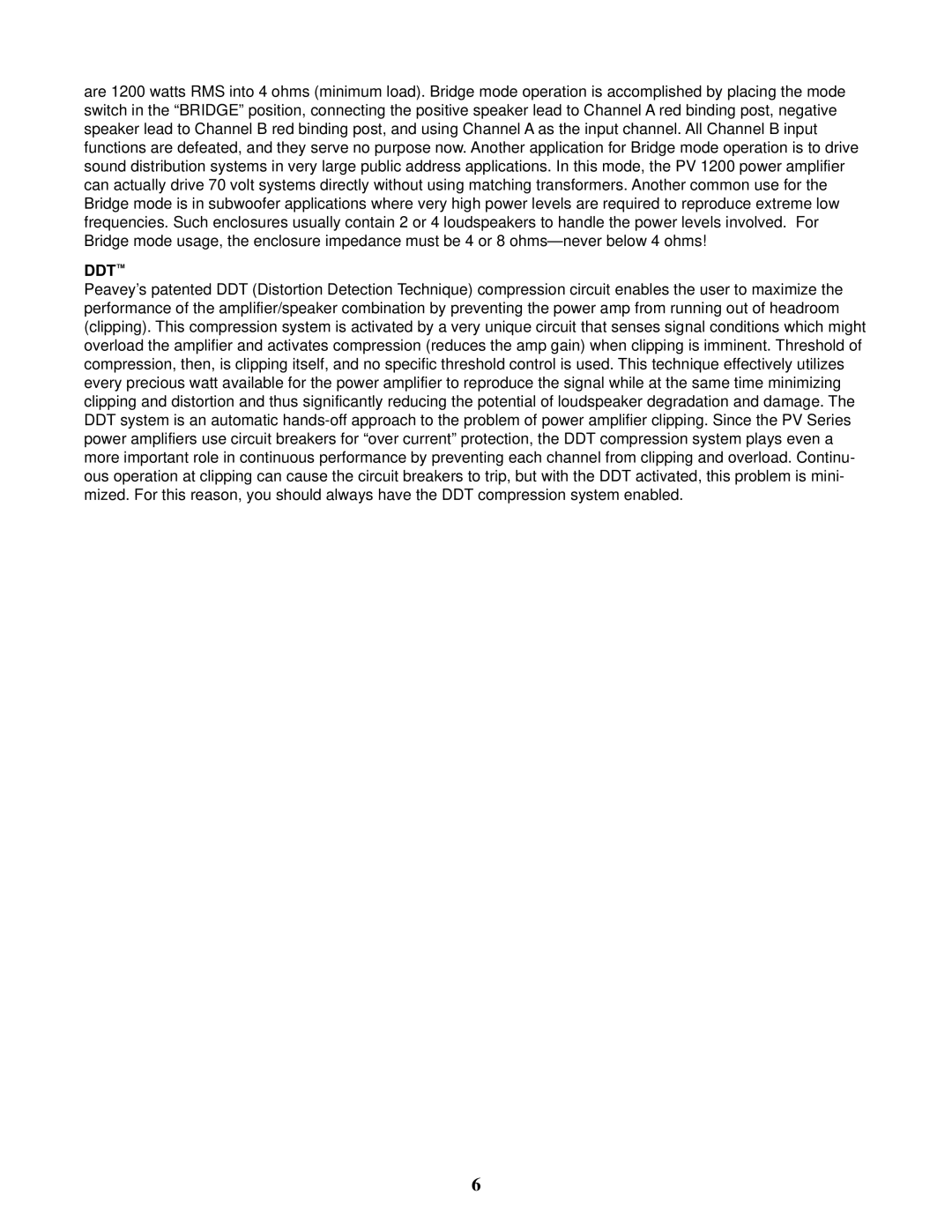are 1200 watts RMS into 4 ohms (minimum load). Bridge mode operation is accomplished by placing the mode switch in the “BRIDGE” position, connecting the positive speaker lead to Channel A red binding post, negative speaker lead to Channel B red binding post, and using Channel A as the input channel. All Channel B input functions are defeated, and they serve no purpose now. Another application for Bridge mode operation is to drive sound distribution systems in very large public address applications. In this mode, the PV 1200 power amplifier can actually drive 70 volt systems directly without using matching transformers. Another common use for the Bridge mode is in subwoofer applications where very high power levels are required to reproduce extreme low frequencies. Such enclosures usually contain 2 or 4 loudspeakers to handle the power levels involved. For Bridge mode usage, the enclosure impedance must be 4 or 8
DDT™
Peavey’s patented DDT (Distortion Detection Technique) compression circuit enables the user to maximize the performance of the amplifier/speaker combination by preventing the power amp from running out of headroom (clipping). This compression system is activated by a very unique circuit that senses signal conditions which might overload the amplifier and activates compression (reduces the amp gain) when clipping is imminent. Threshold of compression, then, is clipping itself, and no specific threshold control is used. This technique effectively utilizes every precious watt available for the power amplifier to reproduce the signal while at the same time minimizing clipping and distortion and thus significantly reducing the potential of loudspeaker degradation and damage. The DDT system is an automatic
6
